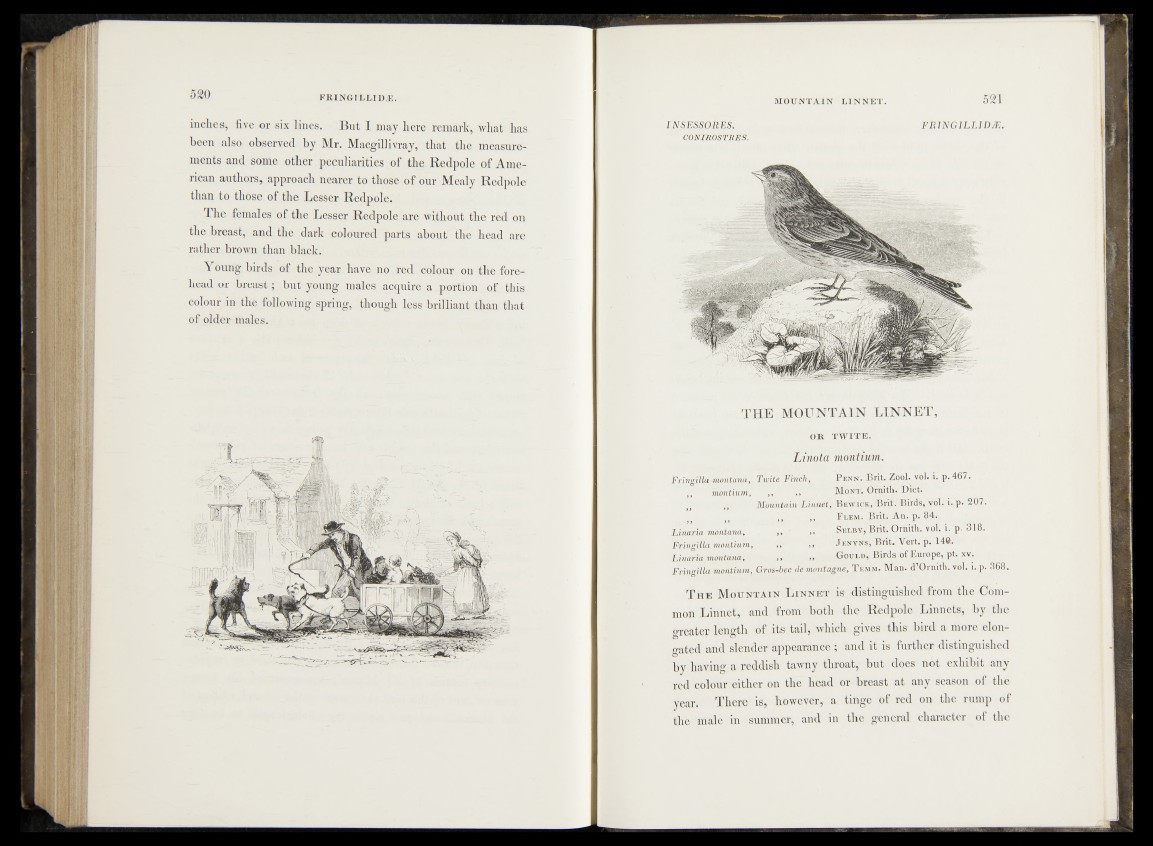
5 * 0 FRINGT LLID.E.
inches, five or six lines. But I may here remark, what has
been also observed by Mr. Macgillivray, that the measurements
and some other peculiarities of the Redpole of American
authors, approach nearer to those of our Mealy Redpole
than to those of the Lesser Redpole.
The females of the Lesser Redpole are without the red on
the breast, and the dark coloured parts about the head are
rather brown than black.
Young birds of the year have no red colour on the forehead
or breast; but young males acquire a portion of this
colour in the following spring, though less brilliant than that
of older males.
MOUNTAIN L INNET.
INSESSORES.
CONIROSTRES.
F R 1NG ILLIDM.
TH E MOUNTAIN L IN N E T ,
OR TWITE.
Linota montium.
Fringilla montana, Twite Finch, P enn. Brit. Zool. vol. i. p.467.
,, montium, ,, ,, Mont. Ornitli. Diet.
, Mountain Linnet, Bewick, Brit. Birds, vol. i. p. 207.
,, ,, F lem. Brit. An. p. 84.
Linaria montana, ,, ' ,> Selby, Brit. Ornith. vol. i. p- 318.
Fringilla montium, „ ,, J enyns, Brit. Vert. p. 14».
L in a r ia montana, „ ,, Gould, Birds of Europe, pt. xv.
Fringilla montium, Gros-hec tie montagne, T kmm. Man. d’Ormth. vol. i. p. 368.
T h e M o u n t a in L in n e t is1 distinguished from the Common
Linnet, and from both the Redpole Linnets, by the
o-reater length of its tail, which gives this bird a more elongated
and slender appearance ; and it is further distinguished
by having a reddish tawny throat, but does not exhibit any
red colour either on the head or breast at any season of the
year. There is, however, a tinge of red on the rump of
the male in summer, and in the general character of the